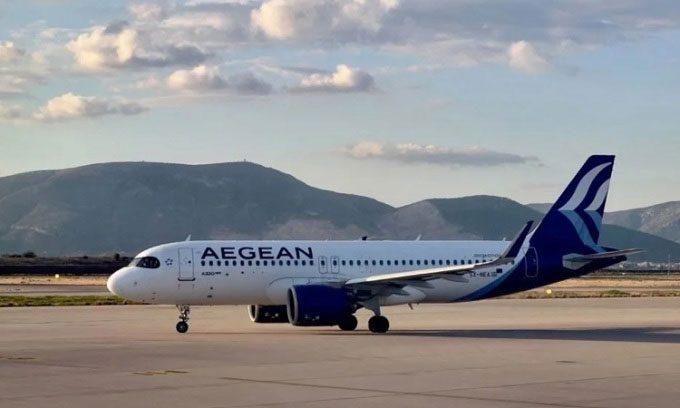Rising temperatures on Earth are making it more challenging for airplanes to take off at certain airports, presenting new challenges for the commercial aviation industry.
As heatwaves become increasingly frequent, the difficulties in taking off may intensify with more flights scheduled, forcing airlines to delay or cancel flights, according to CNN.
According to research conducted by a group of American scientists published in the Journal of Climate, increased temperatures thin the air, reducing the lift generated by airplane wings.

An airplane taking off – (Photo: Thinkstock)
“The fundamental challenge any airplane faces during takeoff is that the aircraft is very heavy and gravity keeps it on the ground,” explained Paul Williams, a professor of atmospheric science at the University of Reading in the UK. “To overcome gravity, the aircraft needs to generate lift. This is done by using air to push the airplane upwards. Lift depends on several factors, but one of the most important is air temperature. As it warms, the air expands, resulting in fewer molecules available to lift the airplane.”
According to Williams, for every 3 degrees Celsius rise in temperature, an airplane’s lift decreases by 1%. “That’s why extreme temperatures make it harder for planes to take off. In some truly severe conditions, planes cannot take off at all,” Williams stated.
This issue particularly affects airports at high altitudes, where the air is naturally thinner. With shorter runways, airplanes have less room to accelerate. According to Williams, if an airplane requires 1,981 meters of runway at 20 degrees Celsius, the distance will increase to 2,499 meters at 40 degrees Celsius.
Williams and his colleagues analyzed historical data from 10 airports in Greece, all characterized by high summer temperatures and short runways. They found that temperatures have risen by 0.75 degrees Celsius each decade since the 1970s. They also discovered that headwinds along the runway have decreased at a rate of 4.3 km/h per decade. Williams noted that headwinds are beneficial for takeoff operations. Some evidence suggests that climate change is causing a global slowdown, making winds seem to blow more slowly.
The research team then input the temperature and headwind data into a takeoff performance calculation model for various aircraft types, including the Airbus A320, one of the most popular planes worldwide. “What we found is that the maximum takeoff weight decreases by 127 kg each year, equivalent to the weight of one passenger and their luggage, meaning the aircraft can carry one less passenger each year,” Williams said.

An Airbus A320 of Aegean Airlines parked at Athens International Airport in October 2022. (Photo: AFP).
From its introduction in 1988 until 2017, the maximum takeoff weight of the A320 decreased by more than 3,628 kg at the national airport on Chios Island, the primary airport in the study with a runway length of under 1,500 meters. London City Airport in the UK also has a runway shorter than 1,500 meters. During the heatwave of 2018, more than a dozen flights had to offload passengers to take off safely. One flight even had to leave behind 20 people. In 2017, dozens of flights were canceled over a few days at Phoenix’s Sky Harbor International Airport when temperatures soared to 48.8 degrees Celsius, exceeding the maximum operating temperature for many passenger aircraft.
A study from Columbia University predicts that by 2050, a typical narrow-body aircraft like the Boeing 737 will need to increase its weight limit by 50% to 200% during summer months at four major U.S. airports: LaGuardia, Reagan National, Denver International, and Sky Harbor.
“There are many solutions to this problem,” Williams shared. “One of them is to schedule departures away from the hottest times of the day, focusing more on early morning and late evening, a strategy already used in hot regions like the Middle East.”
Lighter aircraft are also less affected by such issues, which could promote the use of composite materials like carbon fiber for aircraft frames. Meanwhile, manufacturers like Boeing are offering adjustment options for certain aircraft if airlines do not plan to operate them at airports with high temperatures and elevations. These options will provide additional thrust and a larger aerodynamic surface to compensate for reduced lift without affecting range or passenger capacity.
Of course, a more effective solution would be to extend runways, although this may not be feasible at every airport. In some cases, when none of the above solutions can be applied, passengers may have to forfeit their flights. According to Williams, having to forfeit a flight due to excessively hot weather is very rare. “Most aircraft never reach their maximum takeoff weight. Such forfeitures mainly occur at airports with short runways, high altitudes, and during the summer,” Williams explained.




















































